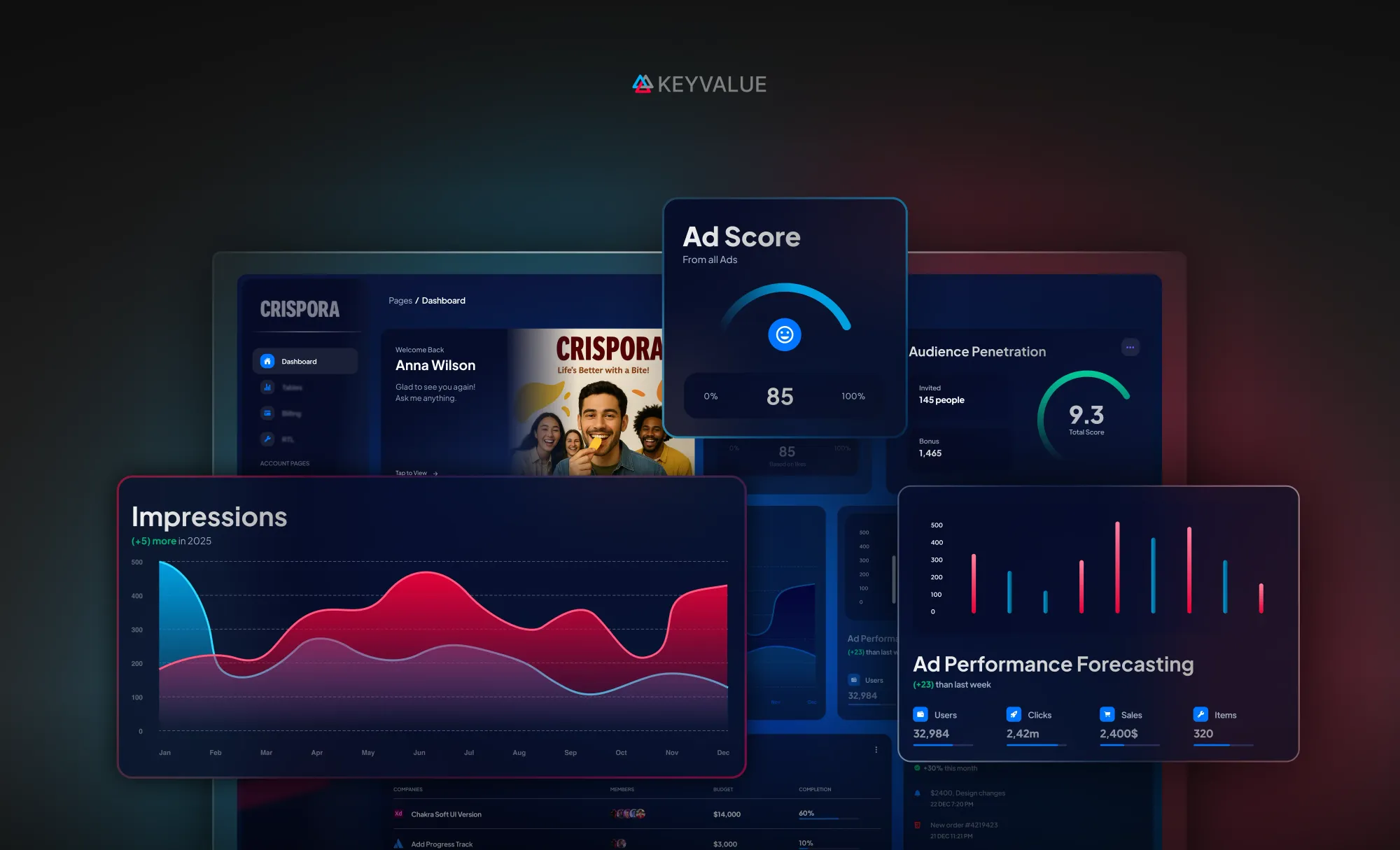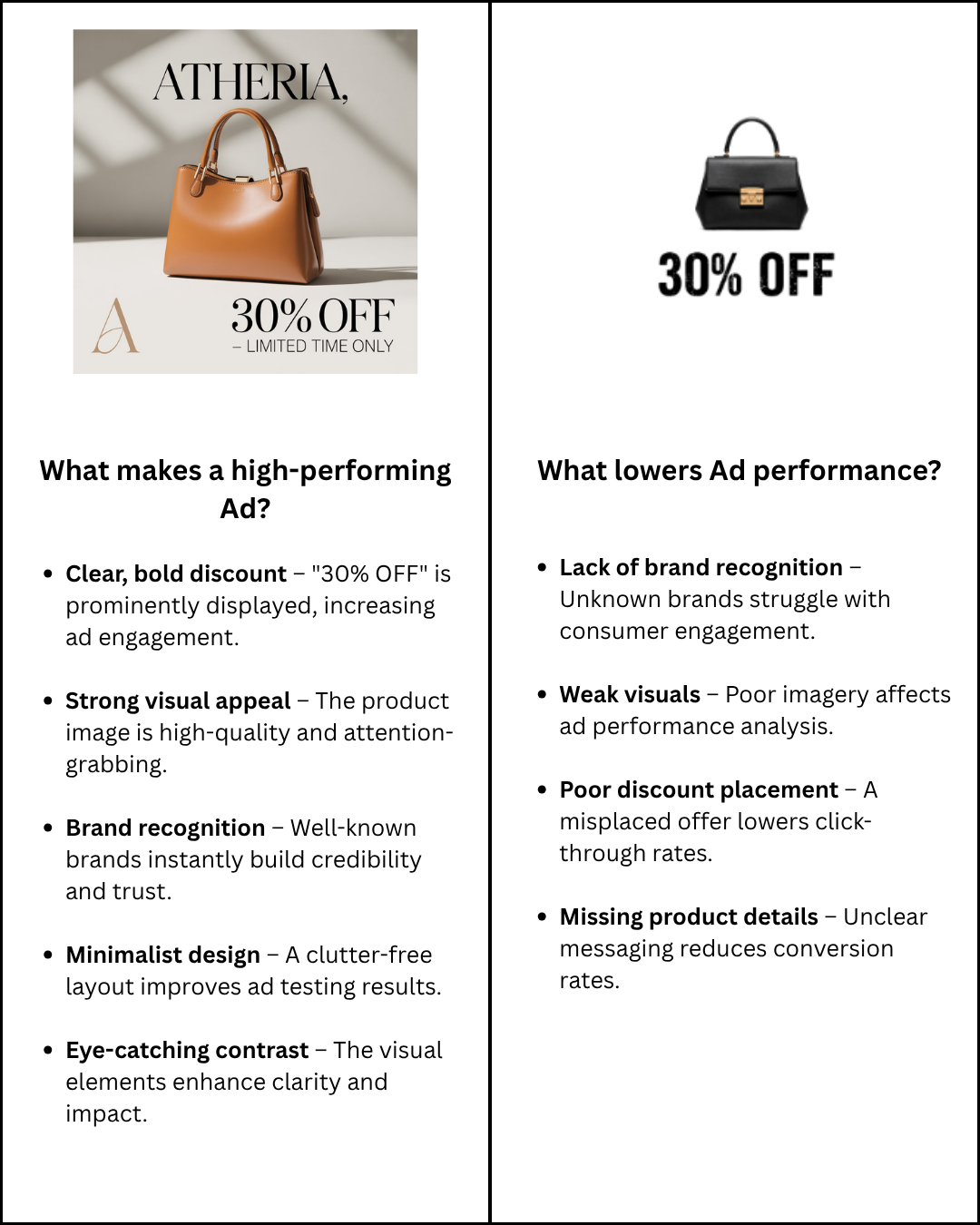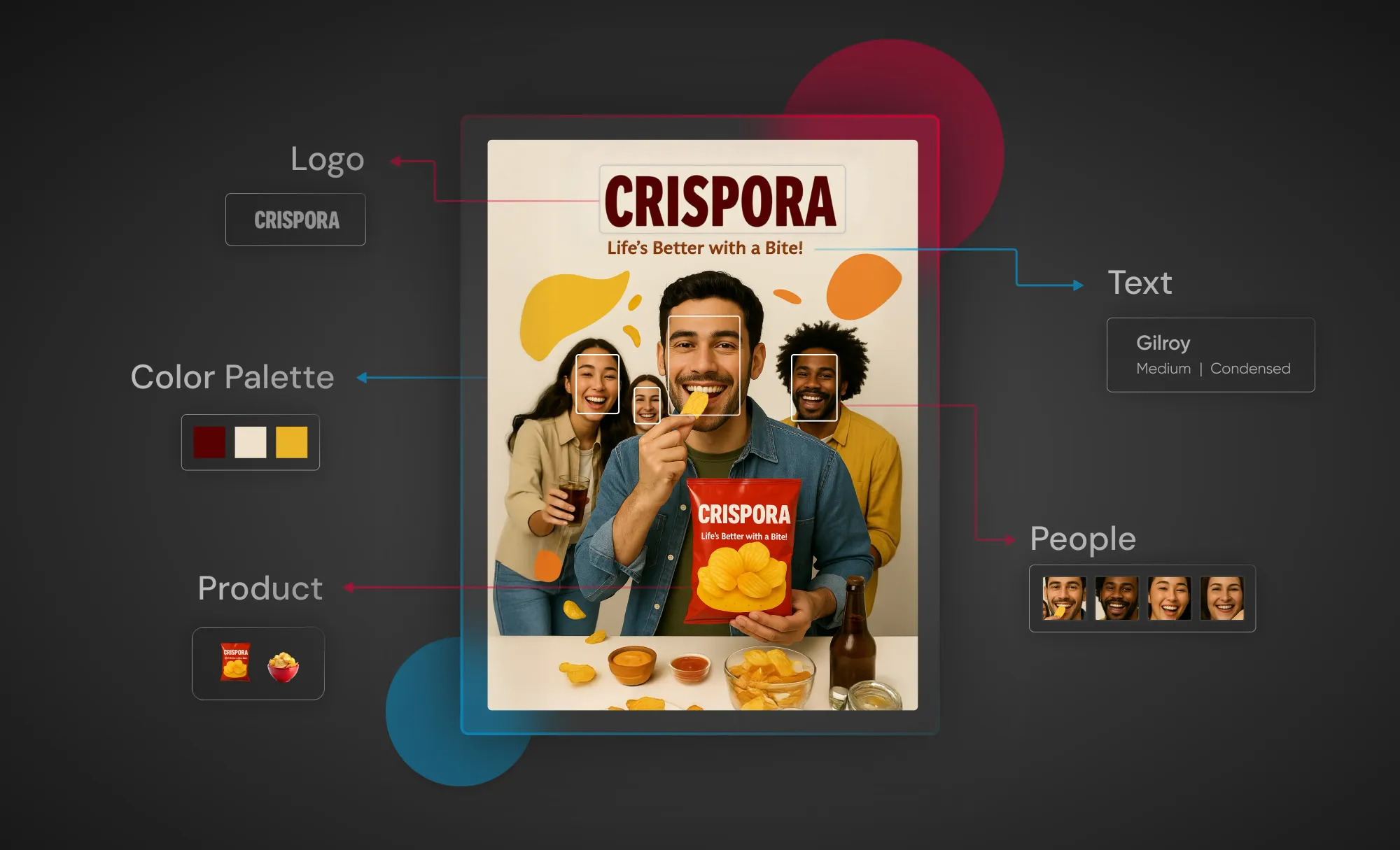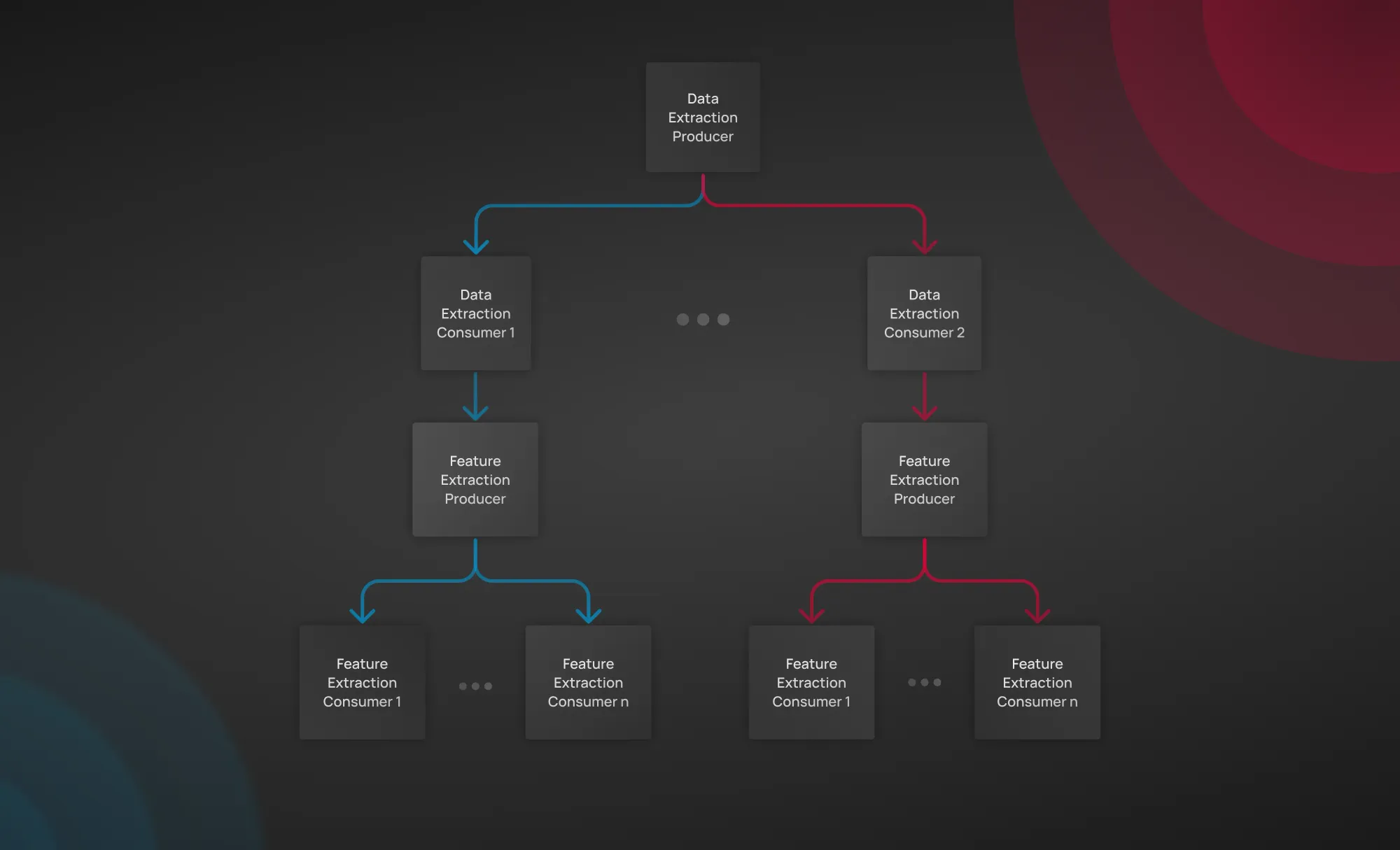
Key Highlights
- AI helps marketers predict ad performance even before a campaign goes live, cutting down costly A/B tests.
- Machine learning models now evaluate visuals, copy, and audience context to improve advertising performance with real-time feedback.
- Predictive analytics empower creative teams to make data-backed decisions that enhance marketing performance tracking and ROI.
The challenge: Will your Ad perform?
Suppose you work in the advertising department of a company, tackling a new advertisement for your product. You've carefully designed an ad, choosing the right visuals, messaging, and CTA—but the nagging question remains: how do you know if it will drive conversions? Will it stand out, boost engagement, and maximize your marketing ROI, or will it fall flat?

Traditionally, ad campaign optimization required A/B testing and trial-and-error adjustments. But today, AI-powered advertising performance tools allow marketers to predict ad success before launch.
The solution: Using AI advertising for better Ad performance analysis
While creating your advertisement, you're faced with numerous choices for images, text, and the overall theme. You could mimic past successful ads, look at competitors, or try something entirely new. But wouldn't it be great if you could get a reliable score—a numeric value—indicating how good your ad is likely to be, as you create it? That's where AI steps in to assist you in the ad creation process. These best AI ad tools for creative analysis help score your ad quality in real time, giving brands a measurable edge in campaign design.
Using AI advertising, machine learning models evaluate and score digital ads based on key performance indicators (KPIs) that matter to you, like:
- Click-Through Rate (CTR): How effective is the ad at driving clicks?
- Return On Ad Spend (ROAS): Is the ad contributing positively to marketing ROI and profitability?
- Cost Per Acquisition (CPA): How much does it cost to acquire a customer through this ad?
By analyzing vast amounts of historical marketing performance tracking data, AI provides you with actionable insights to refine creative decisions.
How Machine Learning improves advertising performance and optimization
So, how does this AI magic actually work to help you? It involves a few key steps:
Step 1: Identifying what works (and why)
The AI doesn't just guess; it evaluates a wide range of factors based on historical data:
- Ad creative elements: It analyzes images, colors, layout, and overall visual composition to see how they impact user engagement.
- Text features: It assesses headlines, calls-to-action (CTAs), copy effectiveness, and even sentiment.
- Digital advertising metrics: It considers factors like readability, brand recall, and estimated audience attention.
- Contextual Factors: Crucially, the model looks beyond the creative itself, considering the environment where your ad will appear:
- Socio-political climate: Analyzing current events and social trends helps gauge potential ad reception and avoid unintended negative associations.
- Economic conditions: Factoring in economic indicators helps understand how consumer spending habits might affect responses to your offers.
- Cultural relevance: Assessing cultural nuances ensures your ad resonates positively with the target demographic and avoids missteps.

Step 2: Preparing the data (The foundation)
To train an AI capable of providing these insights to you, it needs fuel: data. A massive dataset—hundreds of thousands of past ads and their performance metrics—is required. Since this data is often scattered, an automated pipeline is built to:
- Extract the relevant data points.
- Convert this raw data into useful features the AI can understand.
- Store it efficiently, ready for AI training.

This robust system handles millions of ads, forming the backbone of the predictive power you can leverage.
Step 3: Training the AI model (Teaching the AI)
With the data ready, an algorithm like random forest classification is used to predict ad performance. Since "success" isn't always a simple yes/no, performance levels are categorized (using techniques like quantile binning) to help the AI classify ads effectively.
Importantly, the model understands that benchmarks differ. A Fortune 500 company's ad has different success standards than a small business's. The data is adjusted for each client, ensuring the predictions you receive are relevant and fair for your specific context.
The impact: From uncertainty to confident action
So, what does this all mean for you, the advertiser staring at that carefully crafted ad, wondering about its fate? The initial questions—"Will my ad perform?" and "How do I know if it will drive conversions?"—no longer need to be met with mere hope or expensive guesswork.
With AI-powered advertising analytics, you gain the ability to:
- Answer the "what if" questions proactively: Before launching, you can understand the probable impact of your creative choices, text, and even how current external factors might influence performance. This allows you to make informed decisions and optimize your ad designs for the best possible outcome.
- Move beyond traditional A/B testing limitations: While A/B testing is valuable, AI provides a deeper layer of predictive insight, helping you understand why certain elements might perform better and how to adapt your strategy across a broader range of influences.
- Maximize your marketing ROI with data-backed confidence: By implementing strategies that are not only creative but also data-driven and contextually aware, you can allocate your budget more effectively, reduce wasted spend, and significantly improve the chances of your campaigns hitting their targets.

Machine learning doesn't replace your creativity; it empowers it. It transforms the daunting task of ad optimization from a shot in the dark into a more precise, efficient, and ultimately, higher-performing endeavor.
Looking to build AI systems that predict and improve ad performance?
At KeyValue, we’ve helped brands turn creative analytics into measurable marketing growth using cutting-edge AI solutions.
Let’s talk about your next big idea!
Your path to maximized Ad success: Key benefits and performance tracking considerations
The landscape of digital advertising is constantly evolving. For you, the challenge of creating ads that not only capture attention but also deliver tangible results is ongoing. AI offers a powerful way to navigate this complexity, bringing significant benefits to your workflow:
- Increased Efficiency: AI automates the analysis of vast datasets, providing insights much faster than manual methods. This frees you up to focus on creative ideation and strategic planning rather than getting bogged down in data crunching.
- Enhanced Personalization: By understanding nuanced factors, including cultural and economic contexts, AI can help you tailor advertisements more effectively to specific audience segments, increasing relevance and engagement.
- Improved Speed to Market: Predictive scoring allows you to iterate on ad creatives more quickly, confident that your decisions are data-informed. This means you can launch optimized campaigns faster.
- Better Resource Allocation: By identifying potentially underperforming ads before significant budget is spent, AI helps you allocate resources to creatives that have the highest likelihood of success, maximizing ROI.
- Continuous Learning and Adaptation: AI models can be continuously updated with new performance data, meaning your predictive capabilities become more refined over time, adapting to changing market dynamics and consumer behaviors.
However, it's also important for you to acknowledge the current considerations and limitations of this AI approach:
- Data Dependency and Quality: The accuracy of AI predictions heavily relies on the quality and comprehensiveness of the training data. Biased or incomplete data can lead to skewed or inaccurate predictions.
- The "Black Box" Phenomenon: While models like random forests are relatively interpretable, some complex AI can be a "black box," making it challenging for you to understand precisely why a specific prediction was made. This can sometimes make it harder to derive actionable creative insights beyond the score itself.
- Nuance of Human Creativity: AI is excellent at identifying patterns and optimizing based on historical data, but it cannot replicate the truly novel or groundbreaking creative leaps that human intuition can sometimes produce. It's a tool to augment, not replace, your creative expertise.
- Dynamic Contextual Factors: Socio-political, economic, and cultural landscapes can change rapidly and unpredictably. While the model aims to incorporate these, there can be a lag in data collection and model retraining, potentially missing hyper-current nuances.
- Ethical Considerations: As with any AI, you must be mindful of ethical implications, such as ensuring that ad targeting and messaging are fair, non-discriminatory, and respectful of privacy.
By embracing AI-powered strategies, you're no longer just creating an ad; you're engineering its success with a powerful co-pilot. You gain the foresight to understand how it will likely resonate with your audience and perform in the real world, considering the full context. This means you can move forward with your campaigns with greater assurance, turning that initial uncertainty into a clear, strategic advantage, and finally answering that crucial question: "Yes, I have a strong, data-backed reason to believe this ad will perform, and I understand both the power and the current boundaries of the tools helping me get there."

Frequently asked questions
1. How can AI improve ad performance?
AI analyzes ad visuals, copy, and user data to predict engagement and optimize creative elements. It helps marketers make data-driven adjustments that improve conversion rates and ROI.
2. What are the best AI ad tools for creative analysis?
Popular options include Google Ads Creative Studio, Meta Advantage+, and Pattern89, each offering AI-driven insights to enhance creative effectiveness before launching campaigns.
3. How does machine learning enhance advertising performance?
Machine learning models identify high-impact design and messaging patterns from past campaigns, enabling marketers to replicate what works and eliminate underperforming elements.
4. Why is marketing performance tracking important?
It helps businesses monitor ad spend efficiency, audience engagement, and conversion metrics to make smarter campaign decisions and optimize ROI.
5. Can AI replace human creativity in advertising?
No. AI supports creativity by offering predictive insights, but the human touch remains vital for storytelling, emotional resonance, and cultural nuance.

